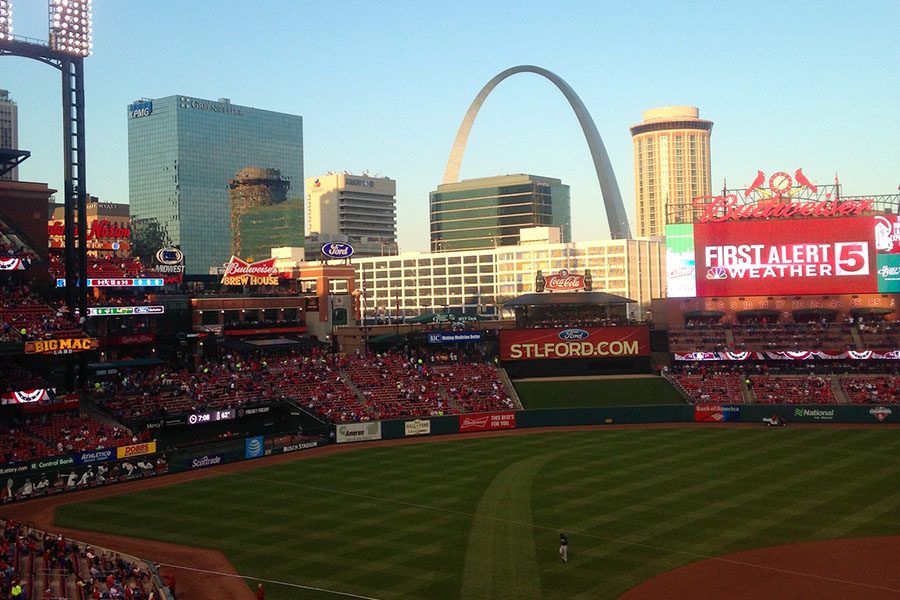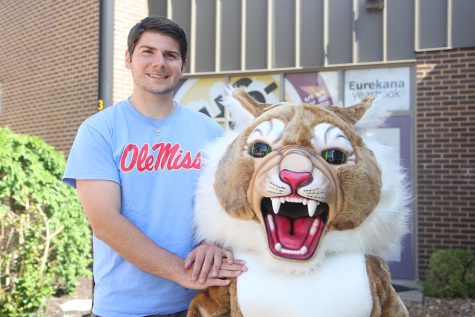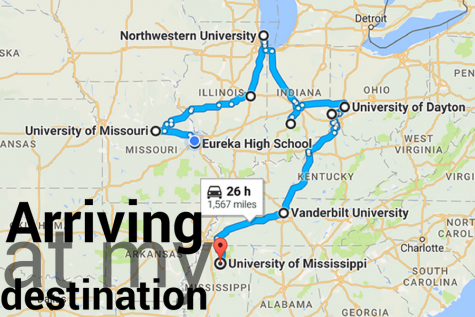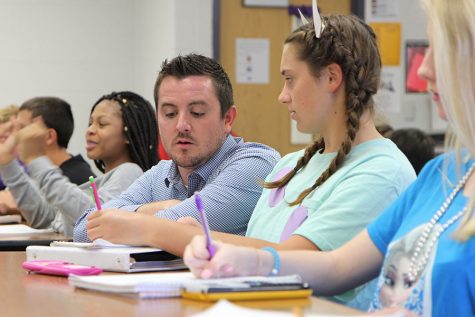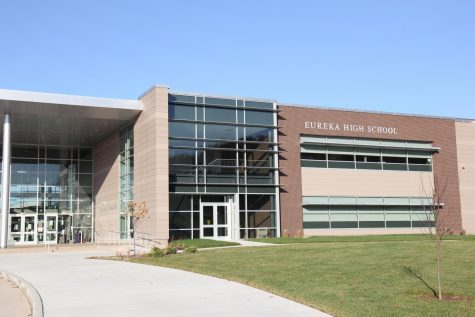Opinions: From the desk: A city vision
Busch Stadium is just one of the many entertainment venues in the city that attracts people from across the country.
I woke up the day after the recent election in a fantastic mood, April 5. After my alarm woke me up at 6:30 a.m. for school, I took a long hot shower and got dressed in khakis and a collared shirt. I ran upstairs to meet my mom for breakfast where we sat together, ate Apple Jacks and watched News Channel 5.
Like any good parent, my mother cares for me and helps me when I need her. When I stress out about piling homework and college deadlines, she’s there with open arms for a hug and a sarcastic pick-me-up. With my father at her side, they run our home with wisdom and love.
It’s a united household.
My excitement for the day diminished and my smile faded away, however, as I saw that my friend, Phillip Sisco, shared a photo on facebook with the caption “utterly disappointed in this city.”
St. Louis City residents voted against Proposition 2, a measure that would allocate approximately $60 million in funds toward the building of a 200,000 seat soccer stadium in downtown.
Failing by about 3,300 votes in a 52.8% to 47.2% decision, the results have left many diehard sports fans heartbroken. Me included.
Because it was a city matter and I’m a county resident, I was not able to vote on this specific proposition.
Once again, I’m reminded of the deep chasm in public opinion that divides downtown citizens from suburban citizens. Too often, the differences between the two demographics are what make it impossible to approve projects that benefit the entire area.
Unlike the dynamic I have at home, St. Louis feels like a city run by separated parents.
The “Great Divorce” took place in 1876. Before the split, the city and the county were connected and governed as one St. Louis County. After the split, St. Louis City and St. Louis County became two separate and independent entities.
In the wake of the Civil War, city residents became aggravated by what they saw as an overbearing county government forcing them to pay burdensome taxes. After the vote was conducted, the pro-separation camp lost by less than 2,000 votes.
Despite the failure of the separation movement, the results were littered with corruption. Ballots showed eraser marks and some precincts reported irrational results. One rural district reported 132 against and only two in favor. Eventually, the Missouri Court of Appeals tossed out over 5,000 ballots, many of them “No” votes.
In the spring of 1877, the city declared independence, and our parents walked out on one another for the first time.
I can drive to the city in less than 30 minutes, and I do it on a frequent basis.
My friends and I love exploring places like Busch Stadium, the City Museum and the Arch. By far, our favorite place to go, however, is Forest Park.
As I stood atop Art Hill, April 3, I felt overwhelmed by the thought of the towering buildings and exhibits that once stood erected at the 1904 Louisiana Purchase Exposition.
After the fair, almost all 900 attractions and over 1,000 buildings were quickly taken apart and dismantled. For seven months, over 20 million people bustled in and out of the convention. It was hectic and extravagant, then just like that… it was gone.
Remnants of the fair can be seen through the remaining structures from the fair like the Art Museum, Brookings Hall at Washington University and the 1904 Flight Cage at the zoo.
For a long time, the remnants of the park were left to rust and fall apart. Founded in 1986, a private nonprofit group called Forest Park Forever took it upon themselves to restore and maintain many of the park’s historic elements. From 1995 and 2003, they raised over $100 million.
Thanks to them, we have one of America’s greatest public urban parks in our own backyard.
While Forest Park Forever works with the City of St. Louis, they take donations and volunteers from residents all over the surrounding area.
It’s clear to see that St. Louis can accomplish so much more together than we can apart. Unfortunately, with separate governing bodies, that unity hardly ever takes place.
This is why we can’t have nice things.
While there are educational and economic reasons why the two should be free from the bureaucratic decisions of the other, recreational projects are a different breed.
A new soccer stadium would’ve been a project that could’ve easily drawn support from the county as well as the city. The split makes that impossible. County citizens who don’t pay taxes toward the upkeep and maintenance of city facilities don’t get to vote on any downtown projects.
If residents in the suburbs want a soccer stadium, they have to offer up some financial support as well.
There needs to be some sort of deal or agreement that helps unite the two in order to undertake large-scale operations in the future. These projects have rippling effects on the entire area, reaching far beyond the city limits.
Forest Park brings in more than 12 million visitors each year, and Busch Stadium is host to over 3 million fans every season.
Like children of a tough, emotional divorce, we are left to try and force a broken system fit into an unrealistic mold.
Until we find opportunities to bridge our divide and work together for our collective prosperity, all we’re doing is setting ourselves up for disappointment.
Your donation will support the student journalists of Eureka High School - MO. Your contribution will allow us to purchase equipment and cover our annual website hosting costs.

This is Nick’s third semester on the EHS hub staff. He is the Digital Media Editor-in-chief. You can follow him on twitter @nweaverEHS_hub.
He enjoys...














